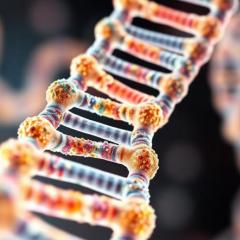A protein produced by bone cells could help in the development of better treatments for osteoporosis.
Professor Hiroshi Takayanagi, of Tokyo Medical and Dental University, and colleagues, report their findings in the journal Nature.
The strength of our bones is controlled by hormones and by the balance between bone formation and breakdown (resorption). If too much bone is broken down and not enough is made, bone density falls and the chance of fractures increases.
Takayanagi and colleagues have found that bone forming cells, or osteoblasts, produce a protein called semaphorin 3A (Sema3A), which has previously been known to regulate nerve and immune cells.
They found not only does Sema3A decrease bone breakdown but, unlike current osteoporosis medications that do the same, it also boosts bone formation at the same time.
When they began their study, Takayanagi and colleagues already knew another protein produced by osteoblasts, called osteoprotegerin, decreases bone breakdown. But, the team suspected there would be other proteins that did the same. The team checked the activity of proteins produced by osteoblasts from mice genetically engineered to have no osteoprotegerin, and found they were still inhibiting bone breakdown. They isolated the molecule responsible for this inhibition and using mass spectrometry identified it as Sema3A.
The researchers then tested mice genetically engineered to have no functional Sema3A and found an increase in bone breakdown and a decrease in bone density. Surprisingly, however, they also found that bone formation was also lower in these Sema3A knockout mice.
In their final experiment they injected Sema3A into diseased mice and found it prevented further bone loss in osteoporosis and accelerated bone regeneration in the case of fractures.
"Many molecules regulate either resorption or formation but this is the first molecule that regulates both at the same time," says Takayanagi.
Dr Gethin Thomas of the Muscoskeletal Genetics Group at The University of Queensland Diamantina Institute welcomes the research.
He says more 2 million Australians are currently affected by osteoporosis and half of women over the age of 50 are expected to suffer at least one osteoporotic fracture.
"The gold standard is to find therapies that can build bone as well as stop bone degradation, as osteoporosis is frequently only diagnosed after the bones have already become very weak," says Thomas.
"This is a very exciting discovery identifying a completely new bone regulating pathway and one that is potentially very 'druggable'."
Sema3A is known to play important roles in the development of heart and nervous system, but researchers are yet understand exactly how the protein acts to boost bone formation and inhibit bone resorption.



